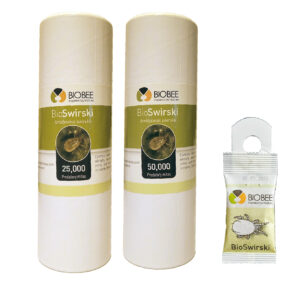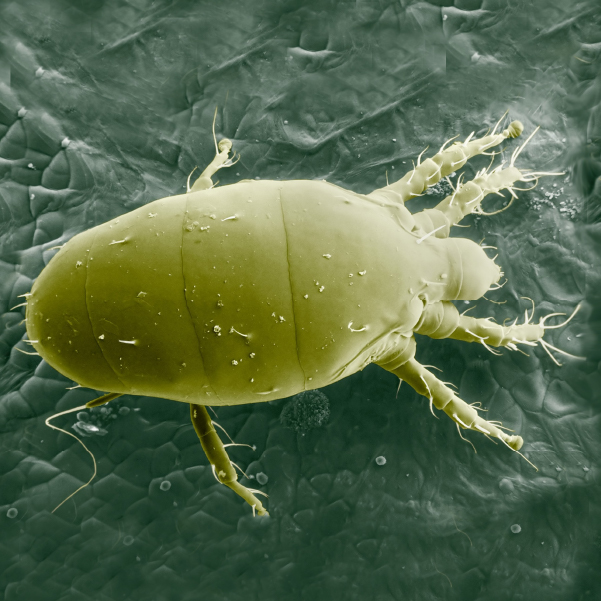BioSwirski (Amblyseius swirskii) is an efficient predatory mite used for the control of young stages of the western flower thrips as well as the eggs and young nymphs of white flies. It also feeds on red spider mites as well as on broad mites.
Consult your local BioBee representative for additional details.
Target Pests
Product

BioSwirski arrives in a shaker containing 25K or 50K mobile stages (adults and juveniles) of A. swirskii.
The product is mixed with a bran-based media and includes a dosing cap that facilitates application.
BioSwirski is also available in sachets of 250 predatory mites each.
Application
Application with the shaker:
- The product should be transported to the crop site in the insulated shipping boxes.
- The shakers should only be removed from the shipping boxes when ready to apply.
- Disperse the BioSwirski mites over the plant as close as possible to the time of receipt.
- Before releasing, gently rotate the container to evenly mix the mites and bran-based media.
- The mites are released by turning the shaker cap to the desired opening and gently tapping the container over the plants while walking between the rows of crops.
- Do not expose to direct sunlight.
Sachet application:
- The product should be transported to the crop site in the insulated shipping boxes.
- The sachets should only be removed from the shipping boxes when ready to apply.
- Hang the BioSwirski sachets on the plant as close as possible to the time of receipt.
- Do not expose to direct sunlight.
![]() BioSwirski chemical list BioBee 2024
BioSwirski chemical list BioBee 2024
Before combining BioSwirski with any chemical pesticide in the crop, please consult your BioBee technical field representative.
Crops
Storage
-

Storage Temperature
-

Roll back & forth before use
-

Do not store in sunglight
-

Store horizontally
Disclaimer
BioBee Sde Eliyahu Ltd. produces and markets biological products. Production is carried out using innovative techniques under controlled quality assurance standards such as ISO 9001:2015, as well as IOBC’s international standards for mass-production of insects. All products are tested to meet specification requirements before leaving the factory.
The success of biological pest control is affected by the crop’s initial pest population (upon application of the product), weather conditions and chemical residue present in the crop, among other possible aggravating factors.
Under no circumstance shall BioBee be liable for the outcome of the implementation in the field, as it has no control over local conditions, the application method, or the possible improper treatment/storage of the product.



















